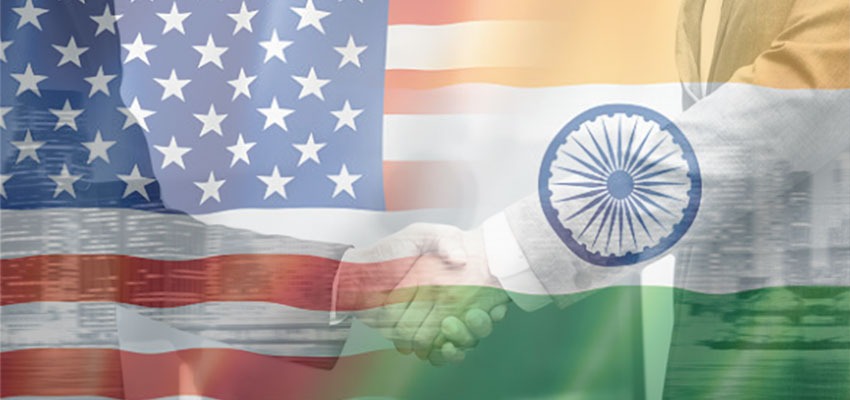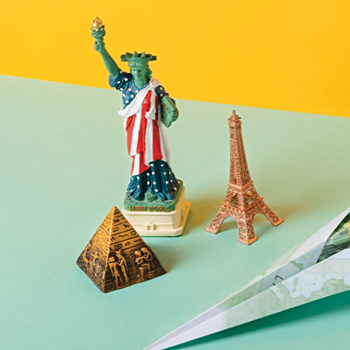Foreign Policy Pitfalls

As important is domestic policy, so is good foreign policy. Foreign policy blunders have pushed many nations into distress, even grief. And, the effect can be long term, as India has been witness to bearing the brunt of faulty foreign policy over the years. It has spared no nation, big or small, even as powerful a nation as the USA is falling victim to a flawed foreign policy
John F. Kennedy had once said, “Domestic policy can defeat us; foreign policy can kill us.” This quote of the late U.S. President is true even today. We can pick up many incidents from across the world that support those words.
India began its new journey in 1947 after independence with the painful partition and creation of Pakistan. Our territories were carved out on both the western and eastern sides to create Pakistan. We accepted the pain at the cost of getting independence, we even accepted the pain of mass killings of our people, as the collateral damage of partition and movement of people from one side to another. Still, we were happy to be independent and to a large extent our boundary being bordered by the Himalayas in the north, and the sea on the east, west and south. Tibet, as a buffer state, guarded our boundary in the north and north-east, as it was located between India and China. We did not share any border with China when we became independent in 1947.
Trump started with the objective of Make America Great Again (MAGA), but has effectively terrorised the world and is also harming his own country. The faulty foreign policy of the USA is hurting itself and also the world
Tibetan blunder
But, this situation changed later when China captured Tibet. This expansionist policy of China started in 1950, which marked the beginning of its direct rule over the region. Following military pressure, Tibetan representatives were forced into signing the ‘Seventeen-Point Agreement’ in 1951,which effectively subordinated Tibet to China, while promising internal autonomy. The military pressure kept on increasing and in 1959, Dalai Lama, who was the head of the government in Tibet, came to India. In a few years, the annexation of Tibet by China was fully completed and even India and the whole world accepted this cruel fact. China’s occupation of Tibet resulted in sharing a long border of 3488 kms. with China. Our border with China now spans across Jammu and Kashmir, Ladakh, Himachal Pradesh, Uttarakhand, Sikkim and Arunachal Pradesh. China coming to our border has inflicted a big loss to us. Today, 38,000 sq.km. approximately of our area in Ladakh is in illegal occupation of China as a result of the 1962 War and partly, about 5000 sq.kms. due to the ceding of Pakistan occupied Kashmir (PoK) area by Pakistan to China. The painful border dispute with China continues till today and the Galwan valley incident of 2020 is a reminder of that.
One cannot blame China alone, for its expansionist policy of grabbing a weaker country. The problem created for India, however, is not just its side-effect, but also due to our then faulty foreign policies. The existence of Tibet as an independent country was very important to us. The Simla Convention of 1916 demarcated the boundary between India, Tibet and China, and this was accepted by China. Within two years of its independence in 1948, China started the process of annexing Tibet. A good foreign policy for India at that time was to protect the independence of Tibet, as it was a buffer state between India and China and for our own safety, we needed this. But, we erred in not following a sound foreign policy, which left a weak Tibet ruled by monks at the mercy of expansionist China.
India and China in 1950 were of equal strength and India could have protected Tibet. Geographically too, India would have found it easier to do that. There was a prudent voice in our country then to protect the buffer state, but this sane voice was ignored. Our foreign policies then, did not use foresight. We see the result today, as we have enemy country Pakistan on our east and China on the north and north-east. Bangladesh has also emerged as a hostile neighbour on our east. China, today is the second most powerful country in the world and is a permanent pain on our border. We are compelled to spend our resources to keep an enemy like China quiet.
PoK pain
The creation of PoK is also the result of an erroneous foreign policy. At the time of our independence, the Maharaja of Kashmir, Hari Singh had delayed the accession decision. On 22 October, 1947, the tribals of Pakistan and irregular army personnel of Pakistan invaded Kashmir, which was still under the rule of King Hari Singh. Then on the 26 October, 1947, he decided on the accession of Kashmir with India. The Indian Army was deployed to fight the invaders. When they were successful in beating the invaders, another foreign policy blunder was committed. On 1st January, 1948, India approached United Nations on the Kashmir issue and a ceasefire was declared. The sad result of the ceasefire was that a large area of our country remained in occupation of the invaders and thus with Pakistan. The PoK area was 72,935 sq. kms. minus 5180 sq.km, which was ceded by Pakistan to China in 1963. The area of Jammu and Kashmir (J&K) left with us is 1, 06, 566 sq. km.
Till today even after 77 years, PoK still remains with Pakistan and it is a place from where terrorists and other non-state actors are sent by Pakistan to J&K. Now, it is believed that if we had not approached the United Nations we could have cleared our area from the invaders. The resultant pain of PoK is an illustration of the importance of foreign policy.
The ‘thousand cuts’
Pakistan fought many battles with India and lost each time. The core policy of Pakistan, since the beginning, has been its hatred and inimical position against India. However, the loss in battles made Pakistan realise that it cannot win a regular battle against a big country like India. This has led Pakistan into a wicked and irregular foreign policy of exporting terrorism to India. Pakistani army trained powerful terrorists and regularly sent them to India to kill our innocent people, and to destroy our assets. The policy followed was, as per one of its late Prime Minister, to give India a thousand cuts.
To make its policy more dreadful, they also sent their soldiers in the garb of terrorists and the Kargil War is an illustration of this. Even the latest, Pahalgam attack, killing of 26 innocent tourists was executed by its army people in a different garb. The end result of this dirty foreign policies of Pakistan against India is that it has been reduced to a beggar country, while India is the fourth largest economy, and on the way to probably become the third biggest economy within a couple of years.
Today, the most powerful country of the world, the United States of America, is in turmoil due to its new policy of weaponising tariffs. America has chosen tariffs as its new tool in its international relations

Tariff terror
Today, the most powerful country of the world, the United States of America, is in turmoil due to its new policy of weaponising tariffs. America has chosen tariffs as its new tool in its international relations. The countries world over including its old allies are being threatened by President Donald Trump with high and unthinkable tariffs. There is a likelihood that this new policy will badly affect America with high inflation and also with the loss of business in the global world. Many countries have given counter threats to America already. Trump started with the objective of Make America Great Again (MAGA), but has effectively terrorised the world and is also harming his own country. The faulty foreign policy of the USA is hurting itself and also the world.
Sri Lankan story
Sri Lanka is another illustration of a bad foreign policies, which effectively ruined the country. A recent civil war and a chaotic situation in Sri Lanka arose in 2022, when the Presidential palace was ransacked. The President, Gotabaya Rajapaksa was forced to flee from the country. This happened due to a combination of both domestic and foreign policy. The initial impact was its failure to understand China's debt trap policy. China pumped in loans which went up to 7 billion dollars, and Sri Lanka failed to service its debt. Sri Lanka in the quest of easy money allowed China to create capital assets which failed to generate any income or generated very low income.
One such asset was the Hambantota Port, which absorbed a loan from China of around 1.2 billion, but did not generate any income. Coupled with it, Sri Lanka followed the domestic policy of giving things to the people at a huge discount or even free. As a result, there was an economic crisis in Sri Lanka and a civil war. Sri Lanka had to even give up Hambantota Port to China on a long lease of 99 years against its debt to China. Ultimately, to save the country, Sri Lanka had to do a course correction and even India helped it to get assistance from the IMF.
Maldives story
Maldives too followed a faulty foreign policy, but subsequently corrected it. The present Maldives President Mohamed Muizzu contested the election on an anti-India plank. Immediately after becoming President, Muizzu went to Turkiye and then to China. He and his ministers spoke against India. As a result, India boycotted tourism in the Maldives. Maldives soon realised its mistake and our Prime Minister was later invited to become its state guest. India even extended a soft credit line of ₹4,850 crores to Maldives when our Prime Minister recently visited that country.
A good foreign policy results in good governance at home. “Foreign policy is really domestic policy with its hat on,” said former US Vice President Hubert H. Humphrey.